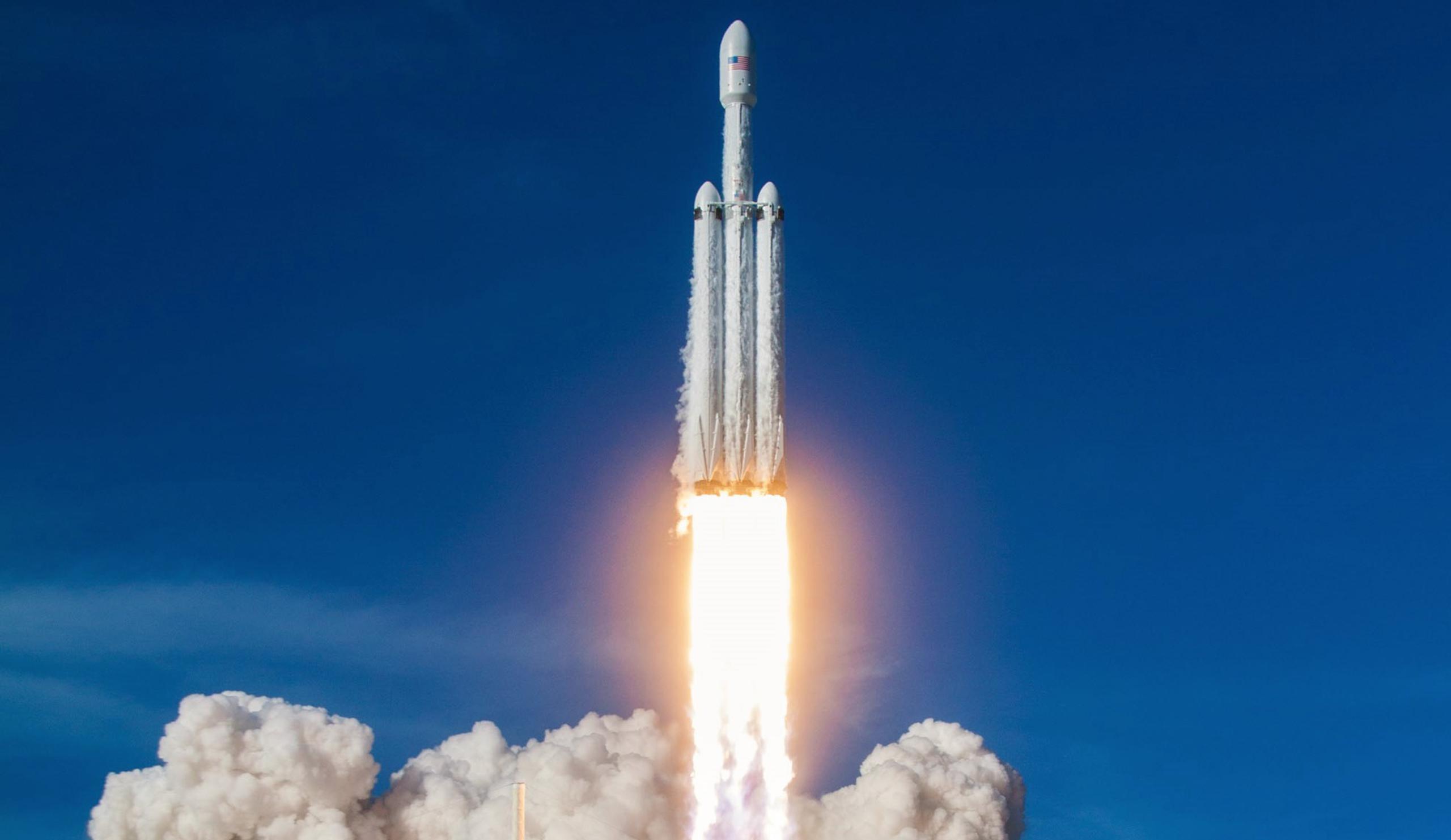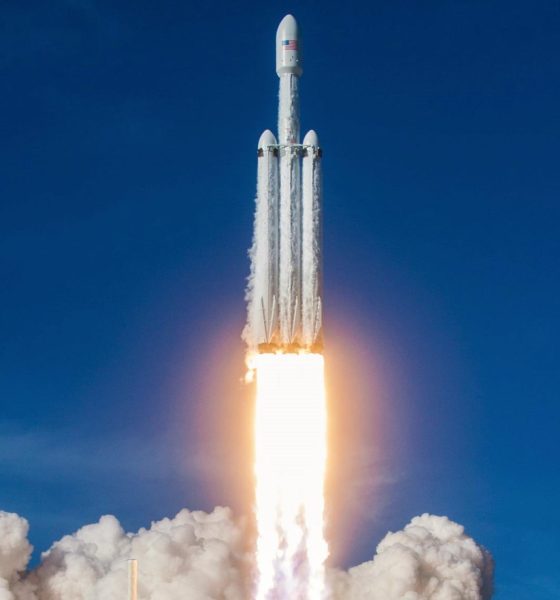

News
SpaceX Falcon Heavy rocket celebrates 4th launch debut anniversary
On the fourth anniversary of SpaceX’s Falcon Heavy launch debut and after an unusual multi-year hiatus, the world’s most powerful operational rocket could be on the brink of an impressive salvo of launches.
Four years ago yesterday, on February 6th, 2018, Falcon Heavy lifted off from NASA’s historic Kennedy Space Center (KSC) Pad 39A launch complex, launched a truly esoteric payload into interplanetary space, and officially became the largest, heaviest, and most powerful active launch vehicle in the world. It also became the third most powerful liquid rocket ever launched, placing SpaceX squarely at the table alongside the likes of NASA’s Saturn V Moon rocket and the Soviet Union’s ill-fated N-1 and Energia.
14 months later, an upgraded “Block 5” version of Falcon Heavy aced two more back-to-back launches in April and June 2019, completing its first missions for paying customers and also aiding the US Air Force in its efforts to certify the capable rocket for high-value military launches. However, such an auspicious beginning made the years of inactivity that immediately followed Falcon Heavy’s third launch even more striking.
Since Falcon Heavy’s late-June 2019 launch of the USAF’s Space Test Program 2 (STP-2) mission, the rocket hasn’t launched once. That wasn’t supposed to be the case. As of June 2018, SpaceX was supposed to launch the US Air Force’s AFSPC-52 (now USSF-52) mission in September 2020. In June 2019, Spaceflight Now reported that USSF-44 – not USSF-52 – would be SpaceX’s next Falcon Heavy launch and was expected no earlier than (NET) “late 2020.” By September 2020, USSF-44 was expected to launch in February 2021. By February 2021, the US military stated that USSF-44 was scheduled to launch NET October 2021. By October 2021, the US military had once again delayed USSF-44 to early 2022 and USSF-52 to “Q2 2022.”
While the military has done little more than acknowledge each new date, it has vaguely implied that the spacecraft – not SpaceX – are to blame for the chronic, prolonged delays. Without even a hint of an explanation, it’s unclear if those delays are likely to end anytime soon, potentially delaying USSF-44 and USSF-52 into the second half or last quarter of 2022 and pushing USSF-67 into 2023. Thankfully, unreliable US military payloads aren’t the only Falcon Heavy missions scheduled this year.
At a minimum, SpaceX is contracted to launch the ViaSat’s first of three next-generation ViaSat-3 communications satellite directly to geostationary orbit (GEO). The launch was recently delayed from Q2 to the end of Q3 2022. SpaceX is also scheduled to launch NASA’s Psyche mission – a spacecraft designed to visit and study an asteroid made almost entirely out of metal – NET August 2022. While customer Inmarsat has yet to finalize or announce a contract decision, Falcon Heavy could potentially be tasked with launching the second Inmarsat-6 geostationary communications satellite sometime later this year.
All told, if every customer is able to stem each torrent of delays, Falcon Heavy could feasibly launch five or even six times in 2022. More conservatively, if USSF-67 and ViaSat-3 are delayed to 2023 and Inmarsat-6 F2 goes to Falcon 9, the world’s largest operational rocket could still launch three times in 2022 and still have up to three more launches scheduled next year.
For now, Falcon Heavy’s first launch in at least 33 months and fourth launch overall isn’t expected until March 2022 at the earliest.

News
Tesla FSD fleet is nearing 7 billion total miles, including 2.5 billion city miles
As can be seen on Tesla’s official FSD webpage, vehicles equipped with the system have now navigated over 6.99 billion miles.

Tesla’s Full Self-Driving (Supervised) fleet is closing in on almost 7 billion total miles driven, as per data posted by the company on its official FSD webpage.
These figures hint at the massive scale of data fueling Tesla’s rapid FSD improvements, which have been quite notable as of late.
FSD mileage milestones
As can be seen on Tesla’s official FSD webpage, vehicles equipped with the system have now navigated over 6.99 billion miles. Tesla owner and avid FSD tester Whole Mars Catalog also shared a screenshot indicating that from the nearly 7 billion miles traveled by the FSD fleet, more than 2.5 billion miles were driven inside cities.
City miles are particularly valuable for complex urban scenarios like unprotected turns, pedestrian interactions, and traffic lights. This is also the difference-maker for FSD, as only complex solutions, such as Waymo’s self-driving taxis, operate similarly on inner-city streets. And even then, incidents such as the San Francisco blackouts have proven challenging for sensor-rich vehicles like Waymos.
Tesla’s data edge
Tesla has a number of advantages in the autonomous vehicle sector, one of which is the size of its fleet and the number of vehicles training FSD on real-world roads. Tesla’s nearly 7 billion FSD miles then allow the company to roll out updates that make its vehicles behave like they are being driven by experienced drivers, even if they are operating on their own.
So notable are Tesla’s improvements to FSD that NVIDIA Director of Robotics Jim Fan, after experiencing FSD v14, noted that the system is the first AI that passes what he described as a “Physical Turing Test.”
“Despite knowing exactly how robot learning works, I still find it magical watching the steering wheel turn by itself. First it feels surreal, next it becomes routine. Then, like the smartphone, taking it away actively hurts. This is how humanity gets rewired and glued to god-like technologies,” Fan wrote in a post on X.
News
Tesla starts showing how FSD will change lives in Europe
Local officials tested the system on narrow country roads and were impressed by FSD’s smooth, human-like driving, with some calling the service a game-changer for everyday life in areas that are far from urban centers.

Tesla has launched Europe’s first public shuttle service using Full Self-Driving (Supervised) in the rural Eifelkreis Bitburg-Prüm region of Germany, demonstrating how the technology can restore independence and mobility for people who struggle with limited transport options.
Local officials tested the system on narrow country roads and were impressed by FSD’s smooth, human-like driving, with some calling the service a game-changer for everyday life in areas that are far from urban centers.
Officials see real impact on rural residents
Arzfeld Mayor Johannes Kuhl and District Administrator Andreas Kruppert personally tested the Tesla shuttle service. This allowed them to see just how well FSD navigated winding lanes and rural roads confidently. Kruppert said, “Autonomous driving sounds like science fiction to many, but we simply see here that it works totally well in rural regions too.” Kuhl, for his part, also noted that FSD “feels like a very experienced driver.”
The pilot complements the area’s “Citizen Bus” program, which provides on-demand rides for elderly residents who can no longer drive themselves. Tesla Europe shared a video of a demonstration of the service, highlighting how FSD gives people their freedom back, even in places where public transport is not as prevalent.
What the Ministry for Economic Affairs and Transport says
Rhineland-Palatinate’s Minister Daniela Schmitt supported the project, praising the collaboration that made this “first of its kind in Europe” possible. As per the ministry, the rural rollout for the service shows FSD’s potential beyond major cities, and it delivers tangible benefits like grocery runs, doctor visits, and social connections for isolated residents.
“Reliable and flexible mobility is especially vital in rural areas. With the launch of a shuttle service using self-driving vehicles (FSD supervised) by Tesla in the Eifelkreis Bitburg-Prüm, an innovative pilot project is now getting underway that complements local community bus services. It is the first project of its kind in Europe.
“The result is a real gain for rural mobility: greater accessibility, more flexibility and tangible benefits for everyday life. A strong signal for innovation, cooperation and future-oriented mobility beyond urban centers,” the ministry wrote in a LinkedIn post.
News
Tesla China quietly posts Robotaxi-related job listing
Tesla China is currently seeking a Low Voltage Electrical Engineer to work on circuit board design for the company’s autonomous vehicles.

Tesla has posted a new job listing in Shanghai explicitly tied to its Robotaxi program, fueling speculation that the company is preparing to launch its dedicated autonomous ride-hailing service in China.
As noted in the listing, Tesla China is currently seeking a Low Voltage Electrical Engineer to work on circuit board design for the company’s autonomous vehicles.
Robotaxi-specific role
The listing, which was shared on social media platform X by industry watcher @tslaming, suggested that Tesla China is looking to fill the role urgently. The job listing itself specifically mentions that the person hired for the role will be working on the Low Voltage Hardware team, which would design the circuit boards that would serve as the nervous system of the Robotaxi.
Key tasks for the role, as indicated in the job listing, include collaboration with PCB layout, firmware, mechanical, program management, and validation teams, among other responsibilities. The role is based in Shanghai.
China Robotaxi launch
China represents a massive potential market for robotaxis, with its dense urban centers and supportive policies in select cities. Tesla has limited permission to roll out FSD in the country, though despite this, its vehicles have been hailed as among the best in the market when it comes to autonomous features. So far, at least, it appears that China supports Tesla’s FSD and Robotaxi rollout.
This was hinted at in November, when Tesla brought the Cybercab to the 8th China International Import Expo (CIIE) in Shanghai, marking the first time that the autonomous two-seater was brought to the Asia-Pacific region. The vehicle, despite not having a release date in China, received a significant amount of interest among the event’s attendees.








